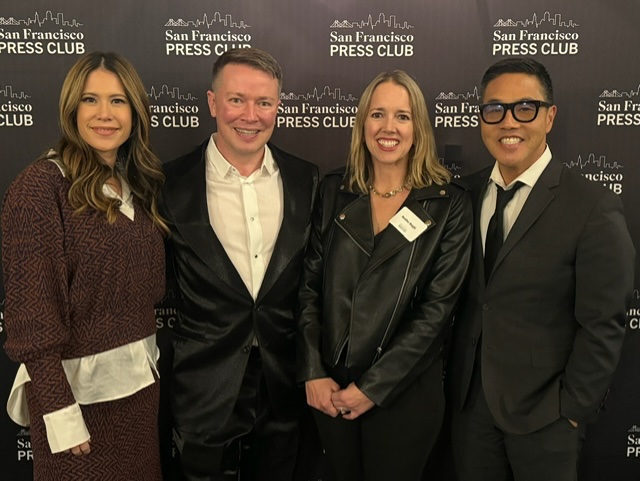As 2022 draws to a close, inflation is still impacting business success, but it’s not the only force doing so. For marketing and communications professionals, making the case for their exceptional utility in times of uncertainty needs to be second nature. It’s in these times that telling the right story, in the right way and with the right tools, is more important than ever.
Bospar’s experts have a dozen brass tacks observations to share. Don’t panic, and …
Resist a gut reaction to recession that cuts advertising and promotional spending. Keep in mind that recessions typically coincide with high unemployment figures, but we’re currently at a 50-year low in unemployment. It’s unlikely that figures will go high enough to signal a severe or longer-term slump. We’re in an unusual time. Even with layoffs, we still have an undersupply of workers, with recently released JOLT figures indicating 1.7 job openings for every unemployed person. A recession is more likely than not to be both shallow and short-lived. And it’s noteworthy too that certain industries, like healthcare, are more or less recession-proof.
Get back to basics. CMOs should (and will) focus on brand awareness and lead generation in 2023. These are the marketing efforts most important to sales. And sales in times of economic uncertainty keep the business fed.
Be able to deliver high-quality content. Even as some companies cut back on media relations programs, they will continue to invest in content. Content is the basic marketing building block, the basis for many high-priority marketing efforts. To keep up with the demand for content, clients will request content-only programs from agencies. Be ready. They will seek content support from third parties if they reduce internal staff.
Know what AI tools can and cannot do well. Some progressive marketers and communicators will start taking a serious look at how AI and machine learning can help them. In the future, a lot of rote work may be automated, which means teams will have more time to be strategic and creative. That said, a company will be publicly bashed for trying to let AI write its press releases or even create its images. Even with the best tools on the market, the difference between human and machine is still obvious, even bizarre. But know that, while AI isn’t helpful for a tailored, finished product, it may help your creatives with idea generation.
Enlist peer power to achieve goals. “Home-grown influencers” will continue to overtake recognized third-party experts in impacting consumer decision-making. Influencers noted for their authenticity will lead the pack of voices as being more trustworthy than the variety of politicians, celebrities and even some experts. Influence now builds first in social media venues and then gets applied to traditional PR, whereas just the opposite used to happen.
Make use of visual communications that are increasingly outperforming words alone. For example, “show me” mini-case histories, with videos, demos and infographics, beat descriptions and promises. And where photos used to suffice, now a video is worth 1,000 pictures.
Surrender to the “consumerization of B2B” — it has accelerated. A pandemic-driven commitment to work-life balance has affected technology decision-makers, too. As a result, B2B and consumer PR tactics will continue to merge. Use that knowledge and cross-pollinate work.
Make key messages even shorter. The “I’m so busy — I’m even too busy for instant gratification” sentiment is everywhere. Online culture has affected our attention spans—in a deliberate, targeted and data-driven way. As attention spans get even shorter in response, so must messages that hook, splash and inform.
Leverage obvious news pegs for pitches and newsjacking. Organizations should not be afraid to have a point of view on inflation, broader technological innovations and transformations, and even, in some cases, social changes. At the same time, avoid stale topics where the story has been beaten to death. People will stop speculating about a return to the office—and accept that some people will work from offices and some from home permanently. Quiet quitting will disappear from the news, replaced by louder kvetching about the economy.
Expect more media outlets to increase the amount of sponsored content they produce. Depending on its severity, a recession will cause earned media to take a hit in 2023 and beyond as media outlets scramble for revenue. Marketing professionals should seek opportunities for paid media placements to augment earned media. At least it’s a sure thing.
Take advantage of the whack-a-mole continuing among media outlets. Layoffs to traditional, ad-reliant outlets will cause a pop-up of even more independent/startup media outlets. As they gain steam, consider the outlets and also consider snatching up talent on behalf of your business as it hits the market. Having former media professionals on your team and treating them well is a long-term win in credibility and expertise for your business.
Publicize ESG efforts. As 2030 draws nearer, more companies are fortifying their environmental, social and governance (ESG) efforts or creating new programs. ESG refers to a company’s approach to safeguarding the environment, managing constructive relationships with all constituents, and ensuring wise stewardship of shareholder rights, executive pay, audits and other instruments. PR professionals should tune into these efforts and ensure they are part of the corporate narrative.
In general and consistent with Bospar survey findings, marketers are well served to promote products, solutions and technologies that have strong ROI and proof points. Make the case for those crystal clear. In tech, it’s often the right strategy to tell a bold story for a solution that’s not 100% baked—but the dough can’t be raw, either. Continuous product iteration is a good thing, but only market what solves a real problem.
Additional contributors to this piece include Chris Boehlke, Tricia Heinrich, Eric Chemi, Peter Kerr, Lisa Morgan, and Lauren Essex




